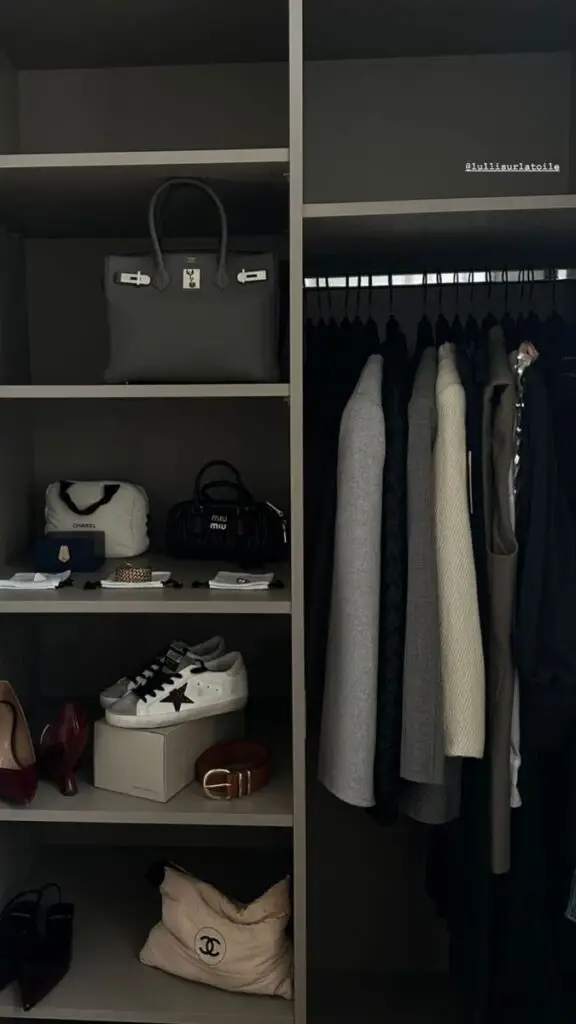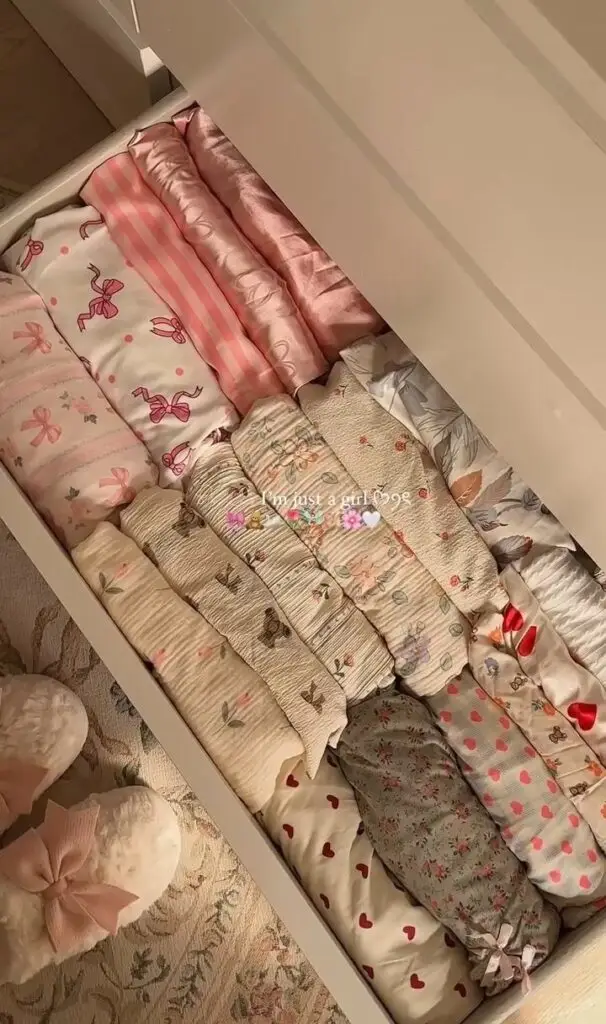Creating a functional and stylish wardrobe room can significantly enhance daily routines and simplify clothing choices. To improve a wardrobe room, one must focus on organization, maximizing space, and personal style. Small changes, such as adding dividers and utilizing vertical space, can make a noticeable difference in how clothes are stored and accessed.
By editing the wardrobe and removing items that are no longer worn, she can create a clutter-free environment. Incorporating bins and labeled baskets helps in categorizing accessories and seasonal clothing, ensuring that everything has its place. This not only makes the room look tidier but also makes it easier to find favorite pieces when needed.
Lighting plays a crucial role in a wardrobe space as well. Good lighting can enhance visibility and showcase clothing in the best way possible, making getting dressed a more enjoyable experience. By combining organization, clever storage solutions, and proper lighting, a wardrobe room can transform into a harmonious and efficient area that reflects personal style.
Assessing Your Current Wardrobe
Understanding what items are currently in one’s wardrobe is essential for making effective improvements. The following steps will help clarify what pieces are necessary, what styles resonate, and provide a foundation for a more functional wardrobe.
Taking Inventory


The first step is to take stock of everything in the wardrobe. She should remove all clothing from hangers and drawers, laying them out so she can see everything at once.
A simple checklist can help organize the inventory process:
- Category: Tops, bottoms, outerwear, accessories.
- Condition: New, good, worn out.
- Frequency of Use: Worn often, occasionally, never.
This visual inventory aids in identifying surplus items and understanding gaps in clothing types. Accurately assessing the condition and frequency of use allows for more informed decisions on what to keep or donate.
Identifying Key Pieces
Next, it’s important to pinpoint key pieces that define personal style. She should ask herself which items she wears most and feels the best in. Elements to consider include:
- Wardrobe Essentials: Classic items such as a white button-up shirt or a pair of well-fitting jeans.
- Statement Pieces: Unique items that express personality, like a brightly colored jacket or patterned dress.
Creating a highlight list of these essential items helps clarify what should remain in the wardrobe. This can lead to avoiding duplicates and focusing on versatile options that lend themselves to multiple outfits.
Determining Your Personal Style


She must reflect on her individual style preferences to create a wardrobe that truly represents her. Some useful techniques include:
- Inspiration Boards: Use platforms like Pinterest to collect images of outfits that resonate.
- Lifestyle Consideration: Evaluate daily activities to understand clothing needs—formal vs. casual.
By identifying preferred colors, patterns, and silhouettes, she can gradually build a wardrobe that feels cohesive. Knowing personal style not only aids in purchasing decisions but also increases satisfaction with everyday outfit choices.
Optimizing Wardrobe Space
Creating an efficient wardrobe space involves effective storage solutions and maximizing accessibility. Careful organization not only saves time but also enhances the wardrobe experience.
Effective Storage Solutions


To make the most of wardrobe space, consider different storage methods. Thinner hangers help to save space and can accommodate more clothing. She also might want to invest in multi-tier hangers that allow stacking various garments, such as skirts or pants, with minimal additional space.
Incorporating vertical storage is also beneficial. Utilizing the top shelves for rarely used items, like seasonal clothing, can free up valuable space below for more frequently worn apparel. Storage bins or boxes can be used on these shelves to keep smaller items organized and protected.
Drawer organizers can bring order to accessories such as belts, scarves, and jewelry. This organization not only maximizes space but also makes finding items easier.
Maximizing Accessibility


Accessibility is key to enjoying a well-organized wardrobe. Using clear storage bins can help make contents visible at a glance. Labels on bins can greatly assist in pinpointing specific items, reducing time spent searching.
Consider the layout. Placing frequently used items at eye level enhances accessibility. Less frequently used items can be stored higher up or in bins out of immediate reach.
Using pull-out racks for shoes can also optimize space while keeping footwear visible. This setup encourages tidiness and makes selections effortless. Regularly reassessing wardrobe organization ensures that it remains functional as personal needs change.
Upgrading Your Wardrobe Essentials
Upgrading wardrobe essentials is a practical approach to enhancing personal style. By focusing on quality and seasonal updates, one can create a functional and stylish collection.
Investing in Quality Basics


Investing in quality basics forms the backbone of a great wardrobe. Key pieces include:
- Classic T-shirts: Opt for neutrals like white, black, and gray. Look for soft, breathable fabrics.
- Tailored Jeans: A well-fitting pair can elevate any outfit. Choose denim in a dark wash for versatility.
- Chic Blazers: A structured blazer adds polish. A neutral color ensures it pairs well with many outfits.
Focus on brands known for durability, as these items withstand wear and maintain their shape. It’s advisable to buy a few well-made pieces rather than numerous inexpensive options. Quality basics can be mixed and matched to create various outfits, making them essential for any wardrobe.
Seasonal Updates


Seasonal updates keep a wardrobe current and fresh. Small changes can make a big impact.
- Add Trendy Accessories: Incorporate items like statement belts, scarves, or hats to revive outfits.
- Season-specific Outerwear: Invest in a lightweight jacket for spring or a cozy coat for winter. These are practical yet fashionable.
Consider refreshing shoes according to the season. For instance, swap heavy boots for stylish sandals as warmer months approach. Focusing on a few strategic pieces each season helps individuals stay fashion-forward without overwhelming themselves.
- 0shares
- Facebook0
- Pinterest0
- Twitter0


